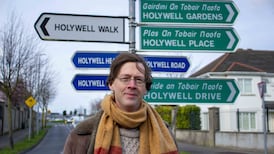Willem J Kolff:WILLEM J KOLFF, who has died aged 97, saved and prolonged countless lives as the inventor of the modern kidney dialysis machine and chief designer of the first mechanical heart implanted in a human being.
“I don’t want to prolong life when it is misery,” he once told an interviewer. “I want to prolong it when it is an enjoyable life.”
Dutch-born Kolff spent much of his career in the US and became professor emeritus of internal medicine, surgery and bioengineering at the University of Utah. He is sometimes described as “the father of the artificial organ”, and was a mentor to Robert Jarvik and other pioneers in that field.
Kolff tried to harness mechanical engineering to a few simple principles of chemistry and physics – and then bring the product to bear on human illness. His search for machines to treat disease encompassed the solidly successful and quirkily quixotic.
He made a major contribution to the surgical pump oxygenator, also known as the heart-lung machine. He invented the intra-aortic balloon pump, used to rest the heart of someone on the verge of death from congestive failure. Both devices are routinely used.
He also invented an artificial ear and artificial eye, each implanted in a few patients. They worked to a measurable degree, but not well enough to commercialise.
In 1982, surgeons at the University of Utah, where Kolff was director of the institute for medical engineering at the time, implanted the Jarvik-7 mechanical heart in the chest of retired dentist Barney Clark. He suffered many complications, however, and died 112 days later.
The far more successful artificial kidney was Kolff’s signal achievement, earning him the prestigious Albert Lasker Award for clinical medical research in 2002.
The machine was based on the simple principle that substances dissolved in water will move from a place where they are highly concentrated to a place where they are not concentrated if given a chance. When blood containing high concentrations of acid, urea molecules and salts is put in a porous container and placed in a bath of water, those substances will move through the pores and out of the blood.
Kolff cobbled together his first dialysis machine in wartime Holland using an enamel tub, wooden drum, metal, cellophane sausage casings and an electric motor.
He used the device to rescue people whose kidneys had temporarily ceased working because of infection, shock or poisoning. The theory was that if you could filter acid and waste out of the blood for a few days or a few weeks, a person might survive until the kidney tissue regenerated and the organs started working again.
His first 16 patients died. His 17th patient, a 67-year-old woman who was a despised Nazi collaborator during the German occupation of Holland, survived for seven years. “People begged, ‘Let her die,’” he told author Donald Robinson for the 1976 book, The Miracle Finders. “But no physician has the right to decide whether a patient is a good guy or not. He must treat every patient who has need of him.”
Kolff’s triumph was especially ironic. In 1941, he had left an academic position at the University of Groningen in the Netherlands because he refused to work under a Nazi doctor named to head the medical department. He moved to the country and became a family physician. For a while, he and his family hid a 10-year-old Jewish boy in their home.
Kolff refined his dialysis machine in the years after the war, and emigrated to the US in 1950.
He did not patent the artificial kidney, viewing it as a contribution to medicine. “At that time, it was thought to be unethical for a doctor to make any money on an invention,” he said.
He made a portable dialysis machine, which worked but required too much professional care to be practical. He also tried to make a disposable one. “I realised that nothing was very popular here unless it was disposable,” he once told an interviewer.
His standard versions of the device worked well enough to treat not only acute kidney failure but also the permanent loss of most of all kidney function, known as end-stage renal disease. It transformed it from a fatal condition to one that could be lived with for years, albeit not easily.
Kolff was born on Valentine’s Day, 1911, in Leiden, the eldest of five children. His father was a doctor who ran a sanatorium.
Kolff married Janke Huidekoper in 1937. They divorced when he was 90. She died in 2005.
He is survived by his five children, 12 grandchildren and six great-grandchildren.
Willem Johan Kolff: born February 14th, 1911; died February 11th, 2009









